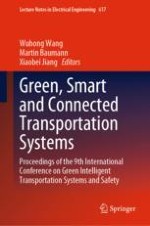2020 | OriginalPaper | Buchkapitel
Research on the Analysis of Campus’ Accessibility Based on Individual Activity Type
verfasst von : Baohong He, Xiang Zhang, Xuefeng Li
Erschienen in: Green, Smart and Connected Transportation Systems
Verlag: Springer Singapore
Aktivieren Sie unsere intelligente Suche, um passende Fachinhalte oder Patente zu finden.
Wählen Sie Textabschnitte aus um mit Künstlicher Intelligenz passenden Patente zu finden. powered by
Markieren Sie Textabschnitte, um KI-gestützt weitere passende Inhalte zu finden. powered by
